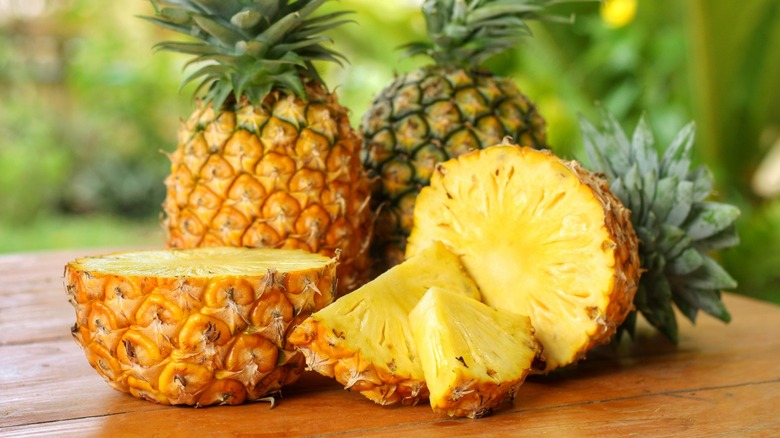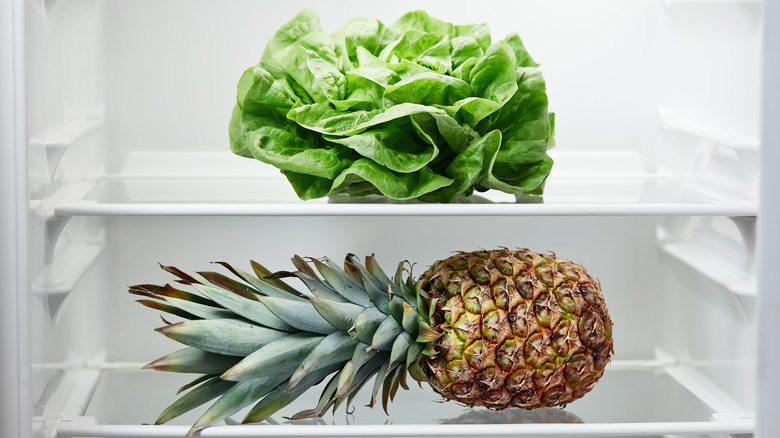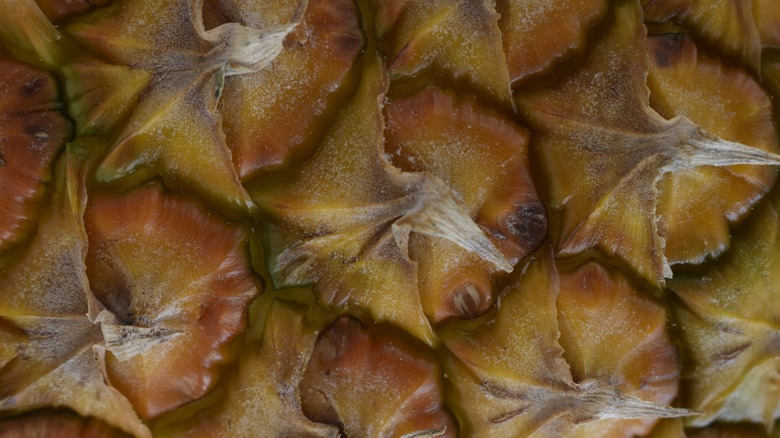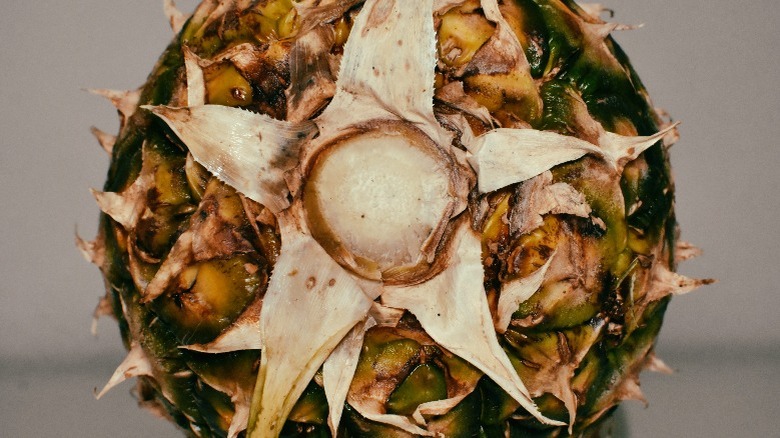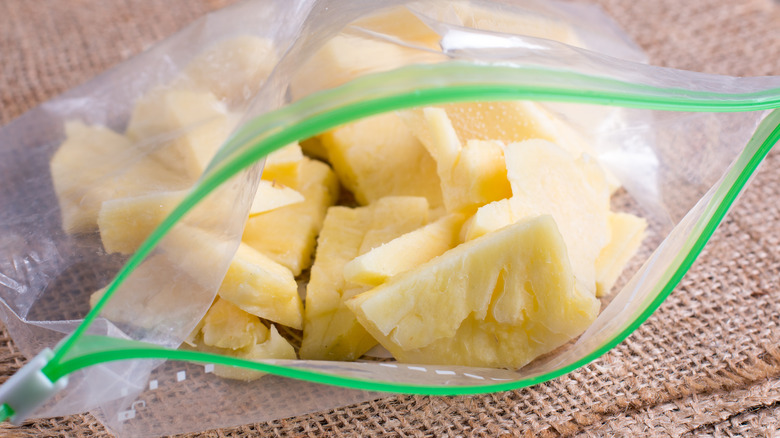How To Tell If A Pineapple Has Gone Bad
Pineapples are loved the world over — and it's not hard to see why. The juicy, sweet-yet-tart golden fruit has a gorgeous, unique appearance and an almost universally appealing flavor. In fact, you might be surprised to learn that, while this tropical treat is affordable and widely enjoyed today, pineapples were once a rare delicacy that only the rich could afford.
The spiky fruit might be overflowing with flavor and notoriety, but, still, no one likes going through the trouble of slicing into one — though we do have a handy pineapple-cutting TikTok hack for that. It's even more of a bummer to put in all that effort only to find that your pineapple prize has gone rotten and your only course of action now is to throw it in the trash. The good news is there are a few signs to watch for that will let you know that a pineapple has gone bad before you even open it up.
How long do pineapples last?
Before you even begin examining your pineapple, stop and think about how long you have had it. Pineapples tend to have a short shelf life, so there is a possibility that your prized fruit has spoiled if you've had it for longer than its typical expiration window.
A room-temperature pineapple sitting on your counter will only last for about two or three days before it begins to turn. You can extend the life of this fragile fruit marginally if you stick it in the fridge; a well-refrigerated whole pineapple can last up to five to six days before it becomes worthy of suspicion.
With this in mind, it is best to purchase a ripe pineapple only a few days in advance of when you intend to eat it, if not on the exact same day. This way, you can guarantee that your pineapple is at peak quality right when you need it most. On the other hand, if you have had a pineapple sitting out for more than a week, you can safely assume that it is time to toss it.
What a bad pineapple looks like
Several visual cues indicate that your pineapple has gone sour, such as a withered top. Mark Dellerman, a pineapple farmer, told Epicurious that if the leaves feel loosely attached, look wilted, appear brown in color, or are detaching completely it's a sign that the fruit is old and past its prime. You can also flip your pineapple over and check the bottom, as this is often the first part of the fruit to show signs of decay. If the bottom is mushy, wet, or moldy, the pineapple has probably gone bad and is not safe to eat.
Take a look at the fruit's outer rind as well. If its color is orange, dark gold, or brown instead of green or yellow, the fruit inside has probably started to spoil. The same applies if the texture is wrinkly, dry, or just unhealthy-looking in general. And, if there are any obvious cracks or leaks, you should definitely toss the pineapple out. You should also pay close attention to any white spots or fuzzy growths on the leaves or body. Again, these are likely to be mold, meaning the pineapple should be thrown away.
What a bad pineapple smells and feels like
It's also important to pay attention to your other senses when checking to see if your pineapple is still good.
Hold the pineapple bottom-up to your nose and sniff it. If you get a whiff of the fruity and sweet pineapple scent you know and love, then the inside should be ripe and okay to eat. However, if you catch hints of anything that smells like chemicals, alcohol, or vinegar, that's a sign that the fruit has started to ferment and will taste bad. Another way to determine the condition of your pineapple is to squeeze it. A ripe pineapple will give a little but will still feel firm. If you squeeze and the fruit feels soft and spongy, that indicates that the inside is deteriorating.
If you can't tell whether your pineapple has gone bad from its appearance, scent, or texture and decide to cut into it, flesh that's mostly brown and mushy is a telltale sign that it's rotten and should be discarded. However, if you only see a few brown spots, you may be able to cut these parts away and still enjoy the pineapple without any issue. Heeding these warning signs will help you save your pineapple just in time, or, at the very least, spare you the effort of cutting into a rotten one.
How to properly store pineapples
In order to maximize the window of time you have to enjoy your pineapple and keep your fruit fresh longer, it is imperative that you store it properly. As we mentioned earlier, a whole pineapple stored in the fridge will last for up to six days — twice as long as it will last at room temperature. However, if you insist on keeping it on your countertop, be sure to store it in a dark, cool area of your kitchen.
Once you have sliced your pineapple, you can keep it fresh for up to one week by storing it in an airtight container in the refrigerator. We recommend freezing your cut-up pineapple pieces in most cases, though, since they preserve beautifully and will last for up to a year in this condition provided that they are placed in a proper storage container. You can then thaw the fruit chunks when you're ready to eat them or blend them up into a smoothie or homemade açaí bowl.
